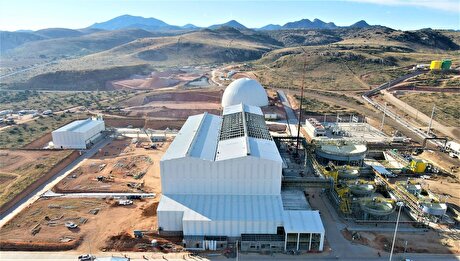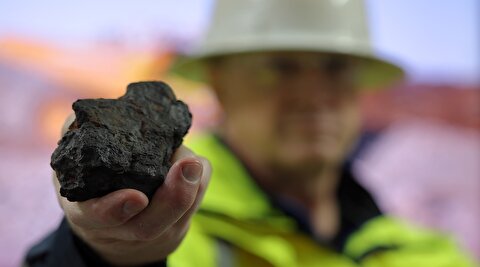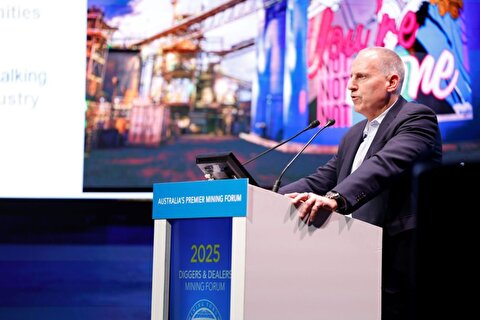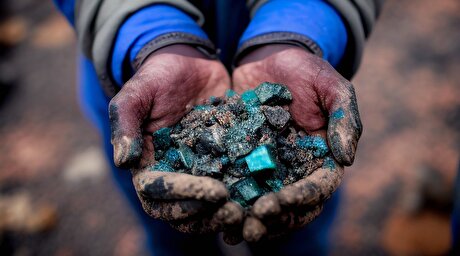
US copper stocks sprint to record high, reflecting transport costs, weak demand

Trading sources added that stocks in these two locations are likely to keep rising until prices are high enough to offset costs of transporting the copper.
Copper stocks held in warehouses registered with COMEX in the United States stand at 228,428 tonnes, up from below 90,000 tonnes at the start of 2017.
Specifically, stocks in COMEX warehouses in Salt Lake City, Utah have climbed to 131,774 tonnes from around 30,000 tonnes in January last year, while those in Tucson, Arizona are up at 74,427 tonnes from below 50,000.
"Trucking costs are generally higher," said Robert Edwards, a consultant at CRU Group. "Premiums in the physical market are just not attractive enough for anyone to try and move metal out of warehouses in Tucson or Salt Lake City."
Physical market transactions are typically based on a premium – currently about $130 a tonne in the United States – over a price set on futures exchanges such as COMEX and the London Metal Exchange.
U.S. premiums are up more than 10 percent since November, but they are still not high enough to cover the costs of transporting the copper to the country's industrial heartland in the Midwest or to consumers in Asia.
Sources said the cost of taking copper from a warehouse in Arizona, loading it into a container, then onto a truck, driving it to a seaport, unloading the container there and loading onto a vessel could cost between $120 and $150 a tonne.
That is about double the level at the end of 2016, sources said, adding that the freight from a U.S. port to top consumer China is a further $40 a tonne.
Reasons for rising transport costs include the jump in oil prices and strong U.S. economic growth, which has meant increasing demand for industrial transport.
"Tighter restrictions on the numbers of hours truck drivers in the U.S. can be on the road have also driven up costs," a commodity trading source said.
He added that incentive payments – sometimes more than $40 a tonne – by warehouses to firms that store copper in Salt Lake City and Tucson had helped offset the costs of getting the metal to those locations.
"The longer you agree to leave your metal in a warehouse, the better the incentive … A fair amount of the copper in those locations comes from local producers and a large amount is Latin America production, which would previously have gone to China."
Latin America is a major producer of Sx-Ew copper, which uses solvent extraction and electrowinning, and for which demand is soft as consumers in China prefer ER – electro-refined – copper. China accounts for nearly half of global demand for refined copper, estimated at around 23 million tonnes this year.
"Players in the Chinese market have always preferred ER to Sx-Ew cathode," said Eleni Joannides, an analyst at Wood Mackenzie. "Certainly during 2017, the ER cathode market in China was more liquid compared with Sx-Ew cathode. That could be one factor behind the higher demand for ER over Sx-Ew now."
Some sources say COMEX warehouse rents for copper at around $10 a tonne a month, or assuming a 30-day month about 33 U.S. cents a day, are an incentive as the average for warehouses approved by the LME is around 51 cents a day per tonne.
"That is a superficial comparison, there are so many other costs to take into account – labour costs, charges for loading, unloading and cancellation charges," a copper trader said.





Barrick’s Reko Diq in line for $410M ADB backing

Trump weighs using $2 billion in CHIPS Act funding for critical minerals

Pan American locks in $2.1B takeover of MAG Silver

US adds copper, potash, silicon in critical minerals list shake-up

Trump raises stakes over Resolution Copper project with BHP, Rio Tinto CEOs at White House

Gold price gains 1% as Powell gives dovish signal

Gold boom drives rising costs for Aussie producers

Giustra-backed mining firm teams up with informal miners in Colombia

US seeks to stockpile cobalt for first time in decades

Kyrgyzstan kicks off underground gold mining at Kumtor

Kyrgyzstan kicks off underground gold mining at Kumtor

KoBold Metals granted lithium exploration rights in Congo

Freeport Indonesia to wrap up Gresik plant repairs by early September

Energy Fuels soars on Vulcan Elements partnership

Northern Dynasty sticks to proposal in battle to lift Pebble mine veto

Giustra-backed mining firm teams up with informal miners in Colombia

Critical Metals signs agreement to supply rare earth to US government-funded facility

China extends rare earth controls to imported material

Galan Lithium proceeds with $13M financing for Argentina project

Kyrgyzstan kicks off underground gold mining at Kumtor

Freeport Indonesia to wrap up Gresik plant repairs by early September

Energy Fuels soars on Vulcan Elements partnership

Northern Dynasty sticks to proposal in battle to lift Pebble mine veto

Giustra-backed mining firm teams up with informal miners in Colombia

Critical Metals signs agreement to supply rare earth to US government-funded facility

China extends rare earth controls to imported material

Galan Lithium proceeds with $13M financing for Argentina project

Silver price touches $39 as market weighs rate cut outlook

















